|
|
A History of Korean Gaming
|
Sonnori / Ironnos / Ntreev:
|
Page 1
|
Page 2
|
|
|
|
손노리 Sonnori
|

|
|
엔트리브 Ntreev
|

|
|
이언노스 Ironnos
|

|
|
Profile:
|
|
Team Sonnori was first formed by a core group of seven high school friends1, who started developing games in a shack on the roof of Choi Seunguk's home, then enlisted together in the game development course at Game School, one of the country's only two educational institutes for game developers at the time2. Their first game, Astonishia Story, turned out the most succesful Korean game until then.
Soon afterwards, however, Sonnori left the Game School publisher Softry. Founding member Seo "Kwanny" Kwanhee got in contact with the arcade game manufacturer Deniam, were Sonnori produced their second game—not least because Deniam had been granted military exemption for its employees3. Darkside Story was popular, but not very successful. Sonnori entered a crisis for the first time: They games were among the most played in Korea, but they were not well paid. An Jinkook quit the team in frustration over the rampant piracy and the filesharing of his game on newsgroups even before it was properly released.4.
During the next few years, Choi Seunguk left for HiCom to work on Corum, "Kwanny" stayed with Demian and made arcade games like Logic Pro before rejoining with Sonnori. The team meanwhile teamed up with yet another developer, Phantagram, before finally establishing themselves as a company on their own in February 19985.
Independency was short-lived, though, as after a continued struggle with release delays and piracy, Sonnori was bougt by Locus Holdings (soon to be renamed to Plenus Entertainment) on August 16th, 20016. Plenus in turn fell into the ownership of CJ Entertainment on January 29th, 20037. On December 1st the same year, Sonnori separated from Plenus and reformed again, although the major team members now parted their ways to form two companies: Sonnori (Lee Wonsul, Park Junhyuk, Park Chankyu) and Ntreev (former Deniam employee Kim Junyeong, Seo Kwanhee). Furthermore in 2006, Sonnori's mobile game division Ironnos (Sonnori spelled backwards) under Park Chankyu seperated itself into a new company as well. Nam Youngshik has been reported to work at Daewon C&A on educational NDS titles8, but his name appears in the credits of more recent Ntreev games, too.
Among the three resulting companies, Ntreev has been the most prolific, creating their own online game service portal GameTree on September 17th, 20099.
|
|
|
Astonishia Story (어스토니시아스토리) - PC-DOS (July 1994)
Astonishia Story R (어스토니시아스토리 R) - GP32 (January 21st, 2002), Windows (May 5th, 2002)
Astonishia Story Part 1 (어스토니시아 스토리 파트1) - Mobile (April 2004)
Astonishia EP2 (어스토니시아 EP2) - Mobile (April 20th, 2005)
Astonishia Story (어스토니시아스토리) - PSP (August 12th, 2005)
Astonishia EP3 (어스토니시아 EP3) - Mobile (September 14th, 2005)
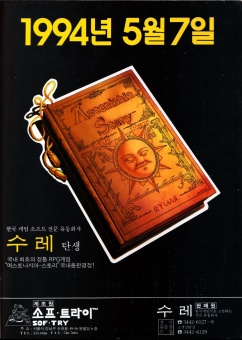
Advertisement
|
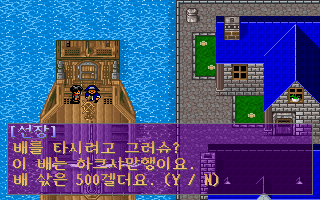
Astonishia Story (DOS)
|
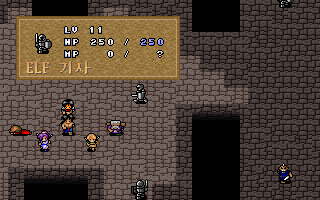
Astonishia Story (DOS)
|
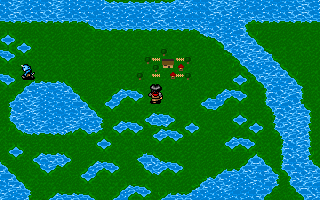
Astonishia Story (DOS)
|
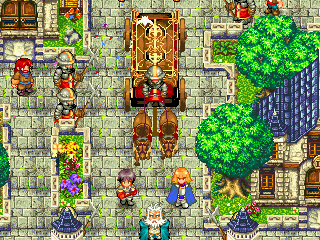
Astonishia Story R (GP32)
|
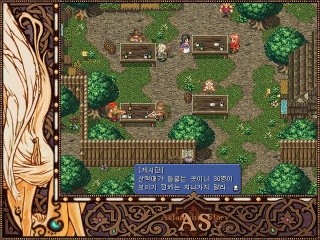
Astonishia Story R (Windows)
|
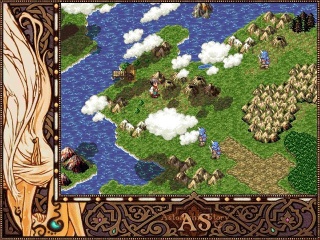
Astonishia Story R (Windows)
|
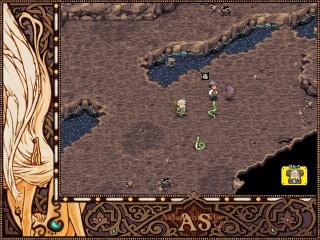
Astonishia Story R (Windows)
|
|
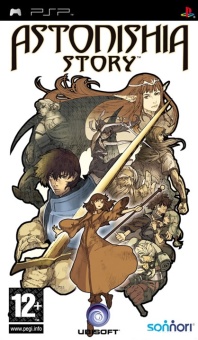
European PSP Cover
Astonishia Story was Sonnori's big debut hit that made them one of the most famed development teams in Korea. Interestingly, it didn't follow the typical JRPG formula established by Dragon Quest formula, but featured tactical combat like in SSI's Goldbox series or SRPGs. Compared to Softmax' War of Genesis series, the tone was rather whimsical, with Passman, a guy in anachronistic clothes who'd ask for the copy protection information from the manual, being an involved character. Astonishia Story was a tremendous succes: As the first Korean game it broke the 50,000 copies barrier, yet it earned the Sonnori team members a measly 700,000 Won (about US$600) bonus each10.
Because of its high popularity, Sonnori remade the game as Astonishia Story R for the GP32 in 2002 with completely changed graphics and new events, and even whole areas redone and expanded. A Windows port followed, but the interface was somewhat cumbersome with the action often taking place only in a tiny window in buildings and during cutscenes. Finally, the game got a PSP version in 2005, whose graphics were based on the remake, but pimped with new visual effects. This is the first version of the game (and the first Sonnori game overall) ever to be released in English, but the translation was reportedly not very good.
The mobile version was divided into three parts, that were published individually by Mjoynet. The first one dubbed Astonishia Story Part 1, aimed to be a faithful recreation of the original (or rather, the 2002 remake), while the following sequels added new special skills for party members and story events to the mix, as well as an online ranking system11.
Astonishia Story Part 1
Astonishia EP2
Astonishia EP3
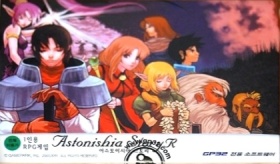
GP32 Cover
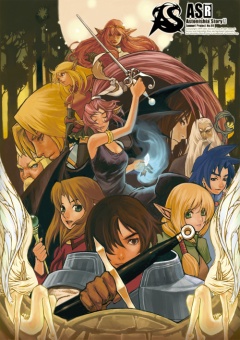
Astonishia Story R Artwork
|
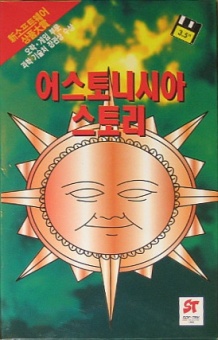
Rerelease cover (Softry)
|
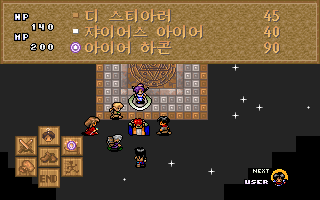
Astonishia Story (DOS)
|
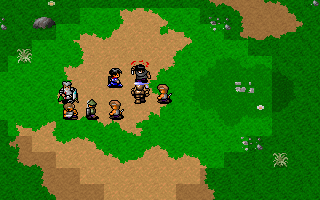
Astonishia Story (DOS)
|
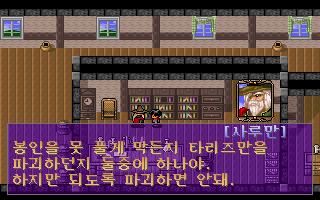
Astonishia Story (DOS)
|
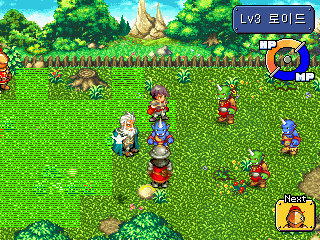
Astonishia Story R (GP32)
|
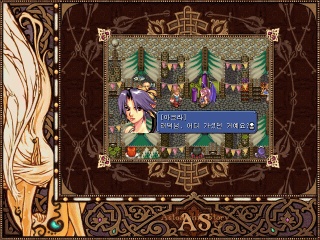
Astonishia Story R (Windows)
|
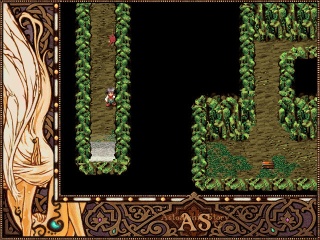
Astonishia Story R (Windows)
|
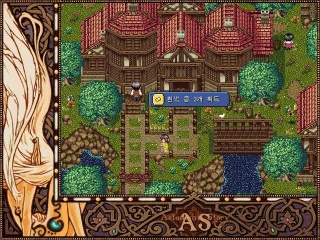
Astonishia Story R (Windows)
|
|
Screenshot Comparison
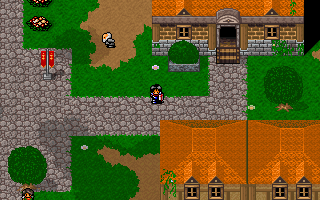
Astonishia Story (DOS)
|
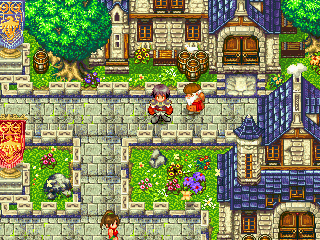
Astonishia Story R (GP32)
|
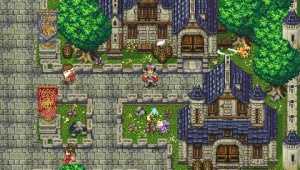
Astonishia Story (PSP)
|
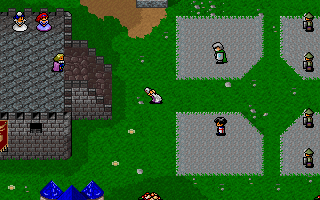
Astonishia Story (DOS)
|
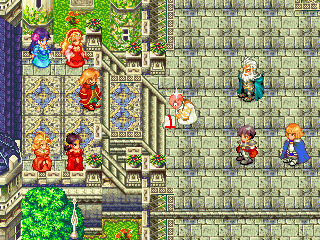
Astonishia Story R (GP32)
|
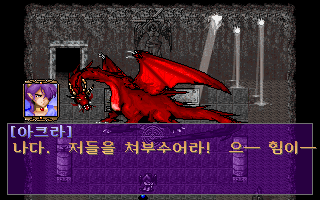
Astonishia Story (DOS)
|
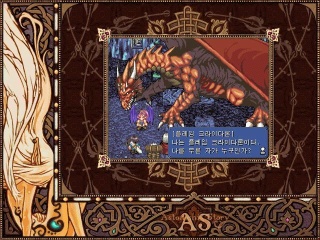
Astonishia Story R (Windows)
|
PSP Screenshots
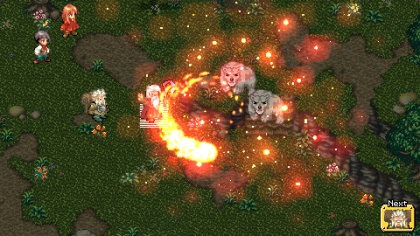
Astonishia Story (PSP)
|
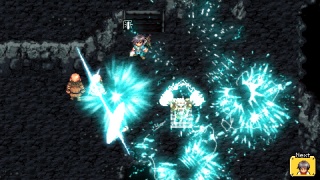
Astonishia Story (PSP)
|
|
|
Darkside Story (다크사이드스토리) - PC-DOS (September 1995), Windows (January 7th, 2005), Mobile (February 8th, 2007)
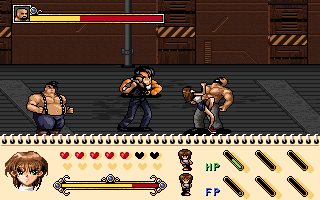
Darkside Story (DOS)
|
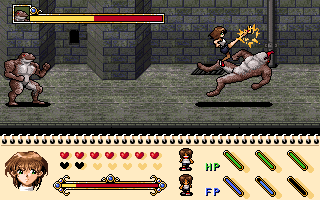
Darkside Story (DOS)
|
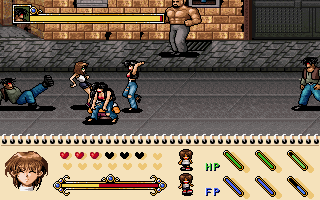
Darkside Story (Windows)
|
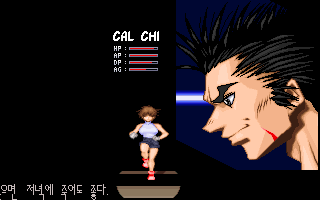
Darkside Story (Windows)
|
|
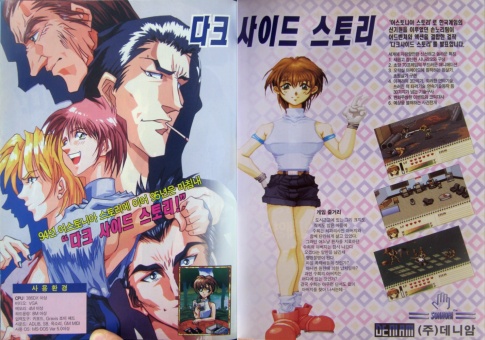
Advertisement
To the surprise of Astonishia Story fans, Sonnori's second game was a beltscrolling brawler like Final Fight or Streets of Rage. Well, not quite like those, as heroine Suhee got two additional meters, displaying her "Hungry Points" and "Feeling Points". The former are raised simply by picking up the various food drops and deplete over time, while "Feeling Points" are a bit more complicated to maintain, influenced by doing combos and getting hit. Both are used to determine Suhee's condition and mood, which not only changes her walking animation, but also gives her individual strengths and moves in each state.
There are also a few adventure parts in between, as Suhee searches for her father, a dentis who's gone missing all of a sudden. It's not very involved, as it just requires you to walk around and talk with everyone to get access to the next combat area. When entering buildings, the game changes to a JRPG-style top-down view, but the movement speed here is atrociously slow.
While Astonishia Story didn't take itself too serious, the story is downright ridiculous this time, involving Passman, his smelly archrival Pestman, sewer mutants and a cameo by Akira from Virtua Fighter, who teaches Suhee a new special move.
For their Package of Romance compilation, Sonnori created a Windows version of Darkside Story, but that one is plagued by countless glitches. Ironnos also brought the game to mobile phones in 2007, now dubbed Darkside Story M.
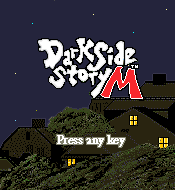
Darkside Story M
|
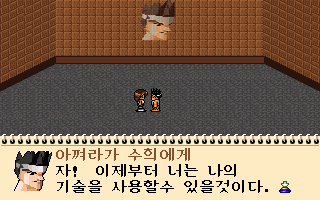
Darkside Story (DOS)
|
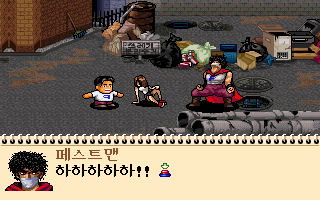
Darkside Story (DOS)
|
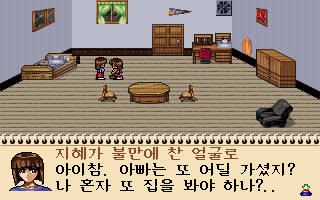
Darkside Story (Windows)
|
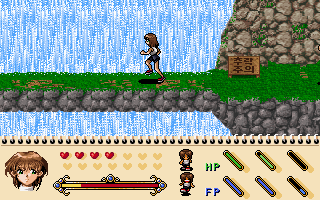
Darkside Story (Windows)
|
|
|
|
Forgotten Saga (포가튼사가) - PC-DOS, Windows (November 1997)
Forgotten Saga (포가튼사가) EP1: 포가튼사가EP1~재앙의불씨~ (Jaeang-ui Bulssi) - Mobile (February 28th, 2008)
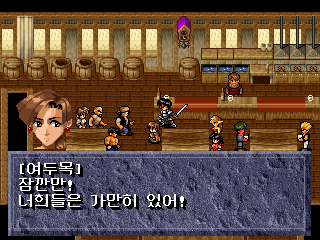
Forgotten Saga (Windows)
|
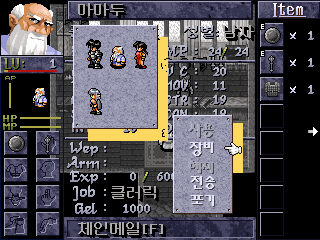
Forgotten Saga (Windows)
|
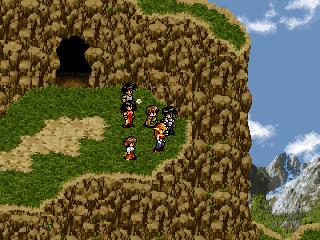
Forgotten Saga (Windows)
|
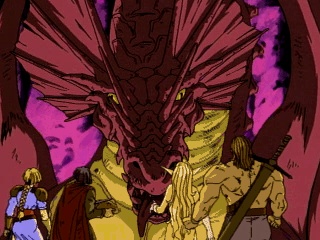
Forgotten Saga (Windows)
|
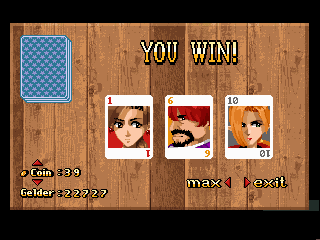
Forgotten Saga (Windows)
|
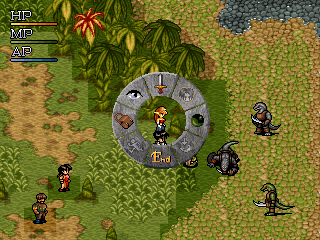
Forgotten Saga (Windows)
|
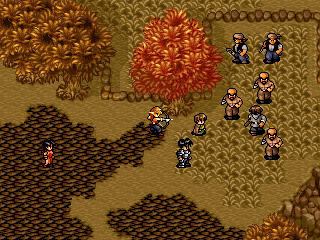
Forgotten Saga (Windows)
|
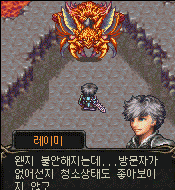
Forgotten Saga EP1 (Mobile)
|
|
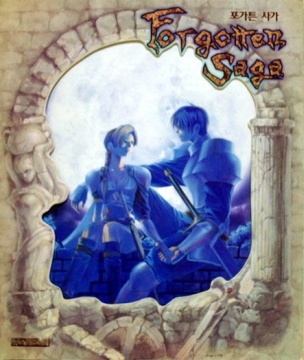
First Edition Cover
As kind of a side story, Forgotten Saga takes place in the same fictional universe as Astonishia Story, but the plots aren't interlinked and there aren't many shared characters save for Passman. While combat works similar as in Astonishia Story, there are a lot of surprising WRPG influences. In the beginning the main character's class is determined by a catalog of questions, just like in many Ultima games. Then three companions are picked from a variety of classes and typical fantasy races (Elves, Dwarves and Hobbits). Two more slots are available for more characters to join temporarily, or even replace some of the original companions for good.
The game is much more nonlineal and open ended than most Far Eastern RPGs, every town holds a variety of sidequests, which often rely on character's classes or the party's reputation, which is raised by doing good deeds. On the other hand the game punishes what the writer deemed immoral behavious, taking inspiration once again from Ultima. For a good portion of the game there isn't even a real "main story" to follow, that only unfolds after solving many individual tasks. Player decisions often have a deep impact on the outcome of a quest. At one point, for example, the party gets caught by a dragon, but manages to escape, alongside many other prisoners. If the heroes then chose to chase and kill the dragon for its treasure instead of fleeing directly, the dragon escapes, killing all fleeing prisoners on the way. The game is also full of little touches, most notable the party doesn't follow the leader in a straight line like in most JRPGs, but in a losely tied bunch of individuals.
Unfortunately, with more player freedom also comes a more challenging QA, and the initial DOS release of Forgotten Saga was terribly bug-ridden. Together with almost a dozen delays (the final release wasn't that far off from the original scheduled date in January the same year, but they kept pushing it back almost on a weekly basis), those caused a lot of fan backlash12. The game soon appeared as a revised windows version with a slightly different interface and bugfixes, then another revised magazine bundle, and finally underwent a final fix for the Romance of Package bundle, each new release with its own patches in between. However, even the final patched version contains plenty of glitches, but at least it's mostly playable. The Romance of Package version also changes the Passman-scene, mocking the game self-ironically as "Romance of Bug" and omitting the original password check because "the package market is dead, anyway." The game in general keeps the typical Sonnori humor, with many more illegitimate cameos, like these two gentlemen:
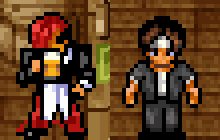
To some degree the developers also seemed to spite their customers, as the default walking speed is extremely tediously slow, unless one finds a pair of special running boots. The Romance version fixes this with an added function key that lets the game run at twice its original speed. Not fixed are several events that permanently strip the party of all its equipment, one of them unavoidable.
Despite its flaws, Forgotten Saga is one of the most interesting Korean RPGs, but of course it was never published in any other languages. Phantagram had earlier announced to release the game simultaneously in Japan13, but those plans were apparently swept over by the delays and bugfixing problems. In Korea the game was quite succesful regardless, selling 60,000 copies within three months after release14.
The mobile version this time was not done by Sonnori or Ironnos, but Nazca. The game is a rather thorough remake, with entirely new graphics (with visible costume changes), a new interface and automapping. On the other hand it strips away many of the non-linear elements, and combat is now action-oriented instead of tactical. The companions are only called into combat temporarily via "tags"15. The "EP1" in the title suggests that it was planned to serialize the game like the Astonishia Story mobile series, but no sequels appeared after the initial release on February 28, 2008.
Artwork
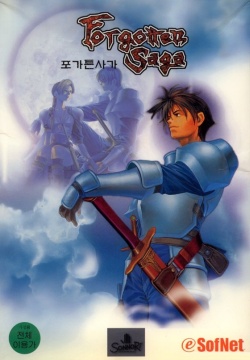
eSofnet Release Cover
|
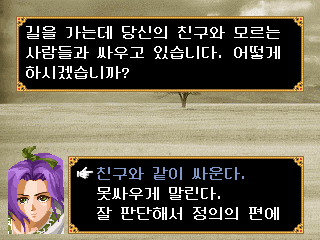
Forgotten Saga (Windows)
|
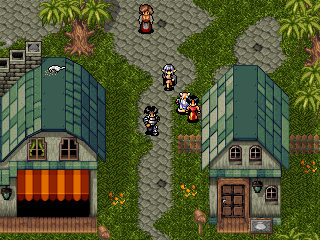
Forgotten Saga (Windows)
|
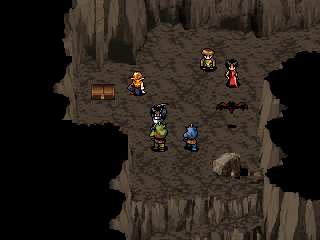
Forgotten Saga (Windows)
|
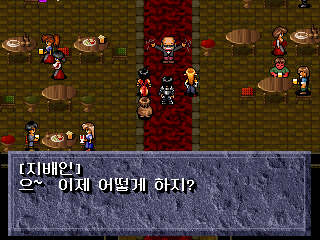
Forgotten Saga (Windows)
|
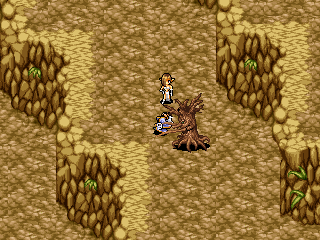
Forgotten Saga (Windows)
|
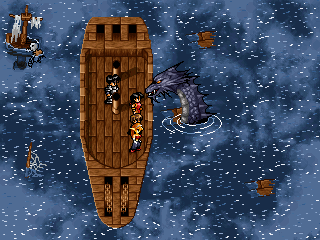
Forgotten Saga (Windows)
|
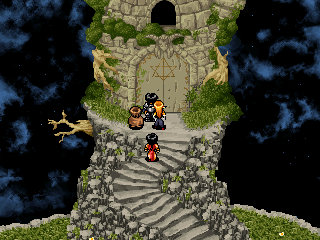
Forgotten Saga (Windows)
|
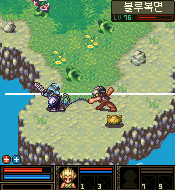
Forgotten Saga EP1 (Mobile)
|
|
Screenshot Comparison
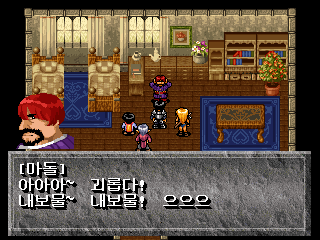
Windows
|
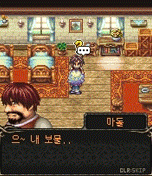
Mobile
|
|
|
강철제국 (Gangcheol Jeguk) / Steel Empire - Windows (September 1999)
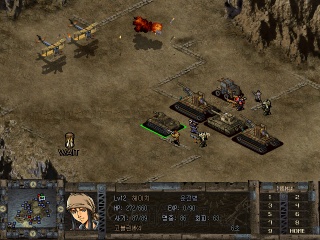
Steel Empire
|
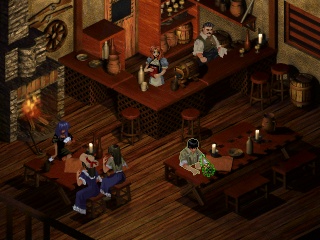
Steel Empire
|
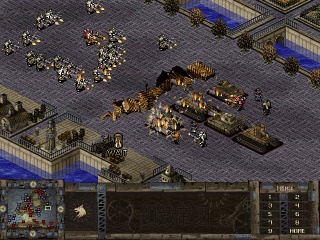
Steel Empire
|
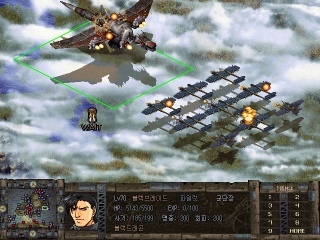
Steel Empire
|
|
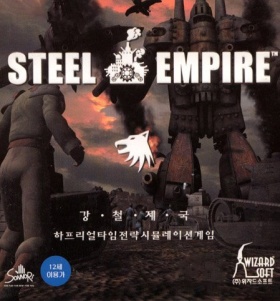
Cover
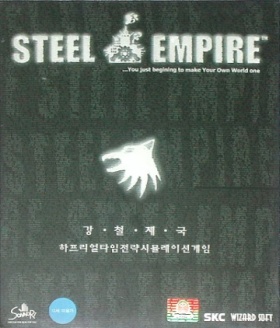
Limited Edition cover
Steel Empire surprised with an hitherto unseen serious tone and an untested genre among Sonnori's games. The player assumes the role of the leader of a mercenary gang in this open scenario steampunk SRPG, and has to build up the enterprise from a small village outpost to conquer the world. The strategy part, where one hires mercenaries, explores technologies, builds tanks and planes and moves the units around the map to seek contracts and wipe out enemies, runs in real time. The combat, however, takes place in turn-based skirmishes and resembles a bit the system of Ogre Battle, although it grants the player more direct control over the units.
The publisher Wizard Soft reported that it had sold 14,000 units of the game16. Sonnori also announced an online web and WAP mobile sequel, with connectivity features between the two versions. The mobile game was available from January 6th, 200117, but the browser version never went online.
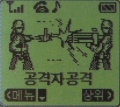
Steel Empire Mobile
|
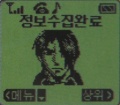
Steel Empire Mobile
|
|
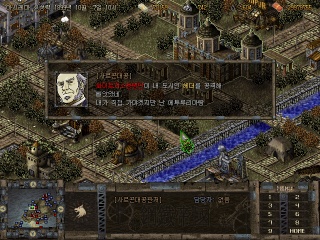
Steel Empire
|
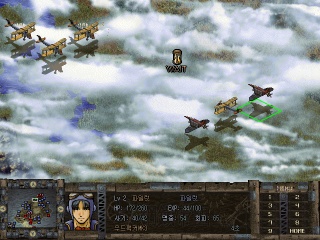
Steel Empire
|
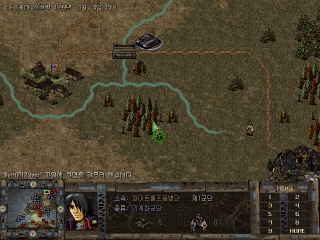
Steel Empire
|
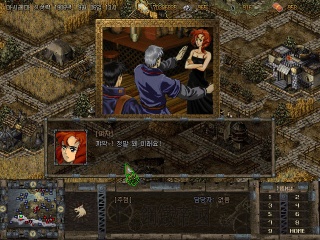
Steel Empire
|
|
|
|
Arcturus: The Curse and Loss of Divinity (악튜러스) - Windows (December 14th, 2000)
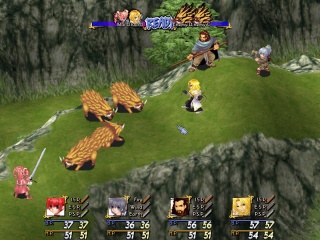
Arcturus
|
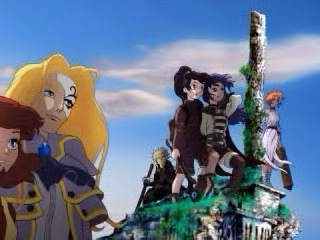
Arcturus
|
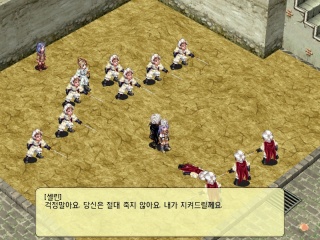
Arcturus
|
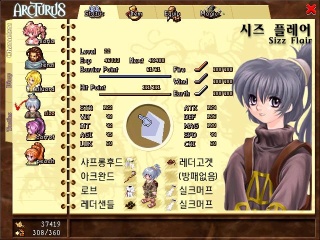
Arcturus
|
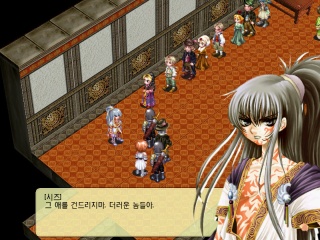
Arcturus
|

Paper Craft
|
|
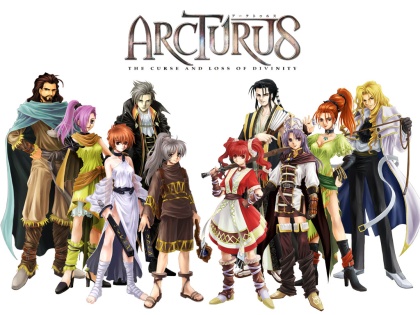
Wallpaper
It had a long time coming after Forgotten Saga, but Sonnori's final PC RPG epos was well worth the wait. Developed in cooperation with Kim Hakgyu's Gravity, Arcturus follows the trend set by Steel Empire and keeps a much more serious in tone than the Astonishia franchise. In the beginning one gets to chose between two runaway kids who end up as a magician's apprentices, and an aristocrat pretty boy who's sent out to search for powerful magical artefacts by his uncle, the nominal governor of a republic actually ruled by a council of cloaked old men, who hopes to use them to change the political situation in his favor. Eventually both stories are connected to finish the game with one single party.
Not only the graphics engine resembles Grandia with its 2D sprite characters in a polygonal world, the action time bar in combat works similarly too, although the whole system is more akin to the more dynamic variant in Grandia II (which was released only a couple of months before Arcturus. Untypical for the genre, however, combat plays a minor role overall. The focus rather lies on the dialogues and story, and Arcturus contains lots and lots of text.
In Korea, Arcturus was originally published in a luxurious limited edition package, including a scarf, six CDs (with soundtrack), an art book with concept sketches, a huge colored manual, a poster and cardboard flaps with papercraft buildings from the game, which were also available for download on Sonnori's homepage. The art book soon became subject of a plagiarism scandal, as 17 monster designs contributed by an external illustrator were stolen from Yasushi Nirasawa's works. Publisher Wizard Soft started a recall for the already delivered limited edition packages, delayed the regular edition to the 23rd of December, destroyed 15,000 already produced copies and replaced the monsters in question18. Nonetheless all 25,000 copies of the first print (10,000 for the LE, 15,000 regular) were sold before the year was over19.
Falcom picked up the game to publish it in Japan, and the Korean gaming community likes to pride itself on the assumption that it influenced Falcom to create the Legend of Heroes VI subseries, which doesn't seem too far fetched when looking at the two. There have even been rumors that Falcom might have licensed the engine20, but that doesn't seem very likely. A team called Mirror Moon had been working on an English translation for Arcturus, based on the Japanese script of the Falcom version, but eventually it was put on indefinite hiatus, where it has remained for years now21.
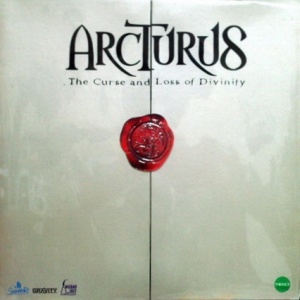
Limited Edition Cover
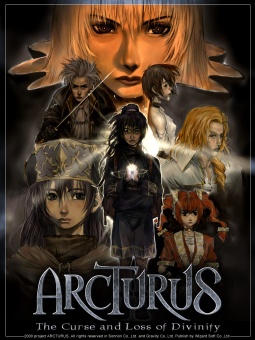
Artwork
|
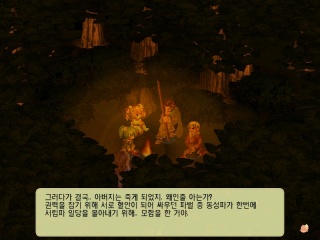
Arcturus
|
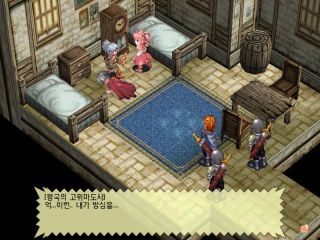
Arcturus
|
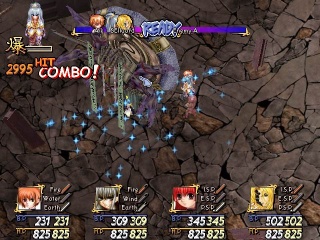
Arcturus
|
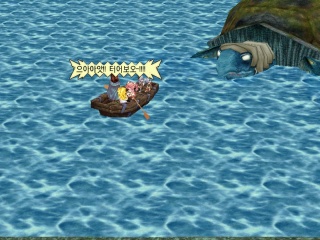
Arcturus
|
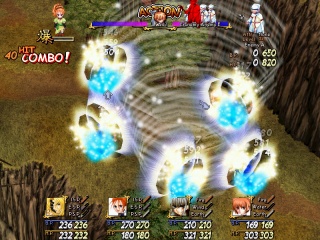
Arcturus
|
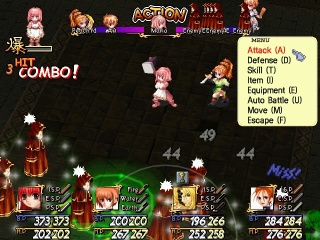
Fan Translation Preview
|
|
|
|
White Day (화이트데이) - Windows (September 25th, 2001), Mobile (July 30th, 2009)
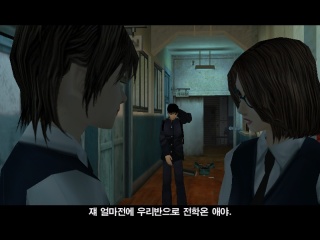
White Day
|
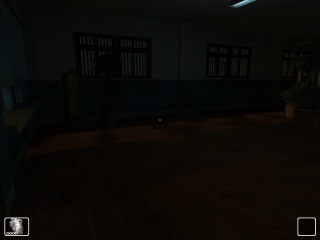
White Day
|
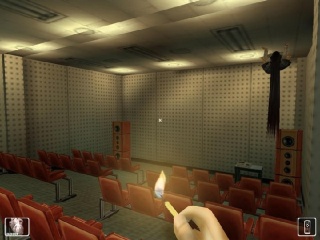
White Day
|
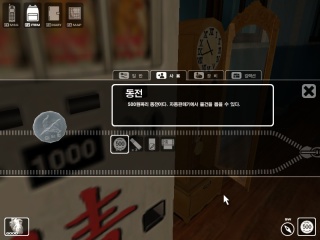
White Day
|
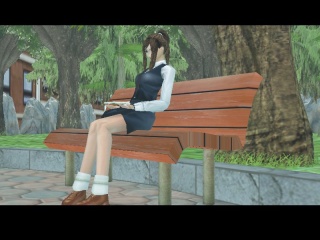
White Day
|
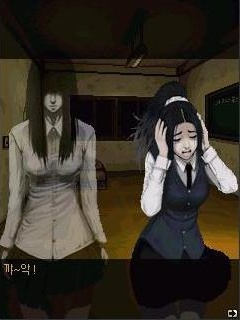
White Day Mobile
|
|
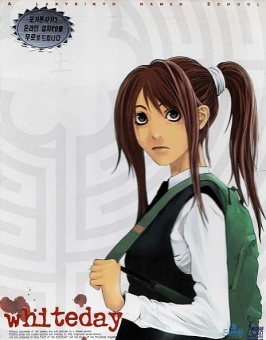
Cover
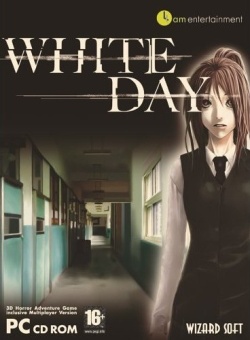
Tentative UK Cover
Now things are getting darker and darker. White Day tells the story of a group of students that all find themselves locked inside their school at the night to White Day (in East Asia, March 14th marks the day when boys "pay back" girls for their Valentine's Day gifts with predominantly white-colored sweets). Soon enough, weird events start happening as the educational institute reveals itself as a cursed paranormal deathrap.
White Day is one of the most effective survival horror games ever, especially since it's actually about survival instead of gunning down horror creatures. Similar to the Clock Tower series (except part 3), the silent protagonist has no means to fight the murderous caretakers (whose faces are customizable, along with that of the player character) that soon start to hunt him, making escape and hiding the only available options to get rid of them. But they're not alone, the school is also infested by ghosts and apparitions. The first person perspective and extremely sparse lighting, which often forces orientation by the excellent sound effects, complete one hell of a creepy package. The player gets a box of matches to fight the darkness, but they only are as bright and last as long as a real match would. (Maybe even a little shorter.) The school also really is the labyrinth promised in the title, although it's possible to find maps, and in easy mode the hero occasionally gets hints sent to him via SMS.
It should also be the last major "package" game Sonnori produced, as broadband internet and warez had thoroughly destroyed the market by the time it got released: Sonnori reported 100,000 patch downloads at a time when only 3,000 copies of the game were actually sold. Even when taking into account possible redownloads by the same users, the numbers speak a very clear language22. As late as 2004, UK publisher AM Entertainment announced to localize the game, but never got to release it. An English language beta version (which appears to have been translated in Korea) was leaked, though. But now White Day is one of the very few Korean games that got fan translated so far.
A mobile version was made available in 2009, which replaces the realtime 3D cutscenes with still images, and overall has to sacrifice a lot of atmosphere to produce actually recognizable graphics on a mobile display.
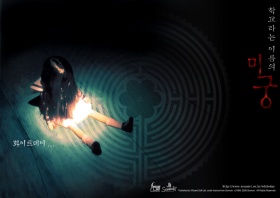
Advertisement
|
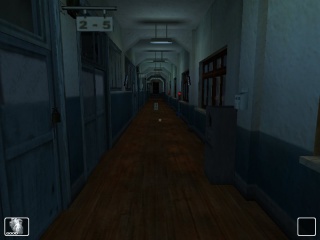
White Day
|
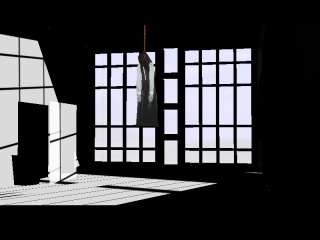
White Day
|
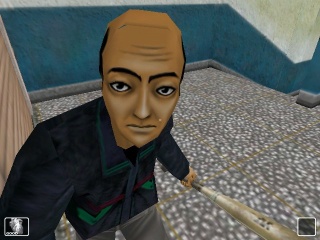
White Day
|
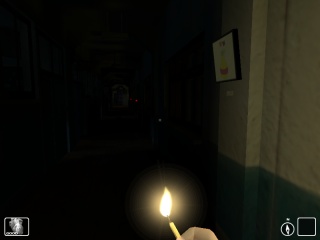
White Day
|
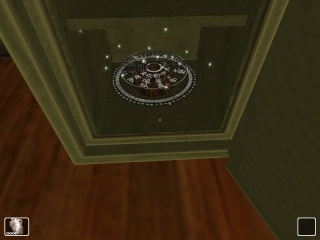
White Day
|
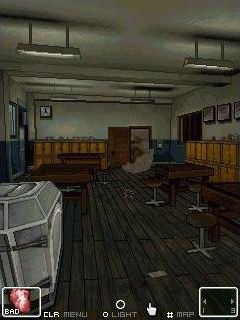
White Day Mobile
|
|
|
|
오!재미 (Oh! Jaemi) - Windows (May 21st, 2002)
|
|
트릭스터 (Trickster) - Windows (April 10th, 2003 [open beta]; February 2004), Mobile (January 25th, 2011), Smartphones (September 2011)
|
|
팡야 Pangya / Albatross 18 - Windows (April 9th, 2004 [open beta]; June 2004), Mobile (July 29th, 2005)
|
|
Cartoon Racer (카툰레이서) - Windows (December 12th, 2002), Mobile (June 2004)
|
|
Monster Kuru Kuru (몬스터꾸루꾸루) - Windows, Mobile (September 2003)
|
|
References
1. http://multiwriter.tistory.com/65
2. http://pann.news.nate.com/info/250812410
3. PC Champ 12/1995, page 102
4. http://pann.news.nate.com/info/250812410
5. http://www.sonnori.co.kr/sonnori/03.html
6. http://www.gamedonga.co.kr/gamenews/gamenewsview.asp?sendgamenews=76
7. http://www.gamemeca.com/news/news_view.html?seq=13&ymd=20030303
8. http://khgames.co.kr/week_01/print_popup.htm?mCode=7964931101284122&sCode=1667951101284513&idx=180&code=w_people
9. http://www.zdnet.co.kr/news/news_view.asp?artice_id=20090831133500
10. Kyunghyang Shinmun October 27th, 1998, page 25. Publisher Softry celebrated the selling of 10,000 units within the first month in an ad in Game Channel 8/1994.
11. http://www.gameshot.net/common/con_view.php?code=AC425f0d882e939
12. http://blog.naver.com/PostView.nhn?blogId=real051&logNo=120140900855
13. PC Champ 2/1997, page 109
14. Kyunghyang Shinmun October 27th, 1998, page 25
15. http://hellokwon.tistory.com/92
16. ET News 5/3/2000
17. PC Power 2/2001, page 167
18. PC Power Zine 2/2001, page 164-165 and www.gamemeca.com/news/news_view.html?seq=4&ymd=20001220
19. http://www.gamemeca.com/news/news_view.html?seq=1&ymd=20001228
20. http://finely.egloos.com/2344207
21. http://mirrormoon.org/projects/arcturus
22. http://www.ebuzz.co.kr/content/buzz_view.html?ps_ccid=82002
23. www.skninternet.com/company/news_release_view.asp?cd=20&sw=&pn=1
|
A History of Korean Gaming
|
Sonnori / Ironnos / Ntreev:
|
Page 1
|
Page 2
|
|
|
|